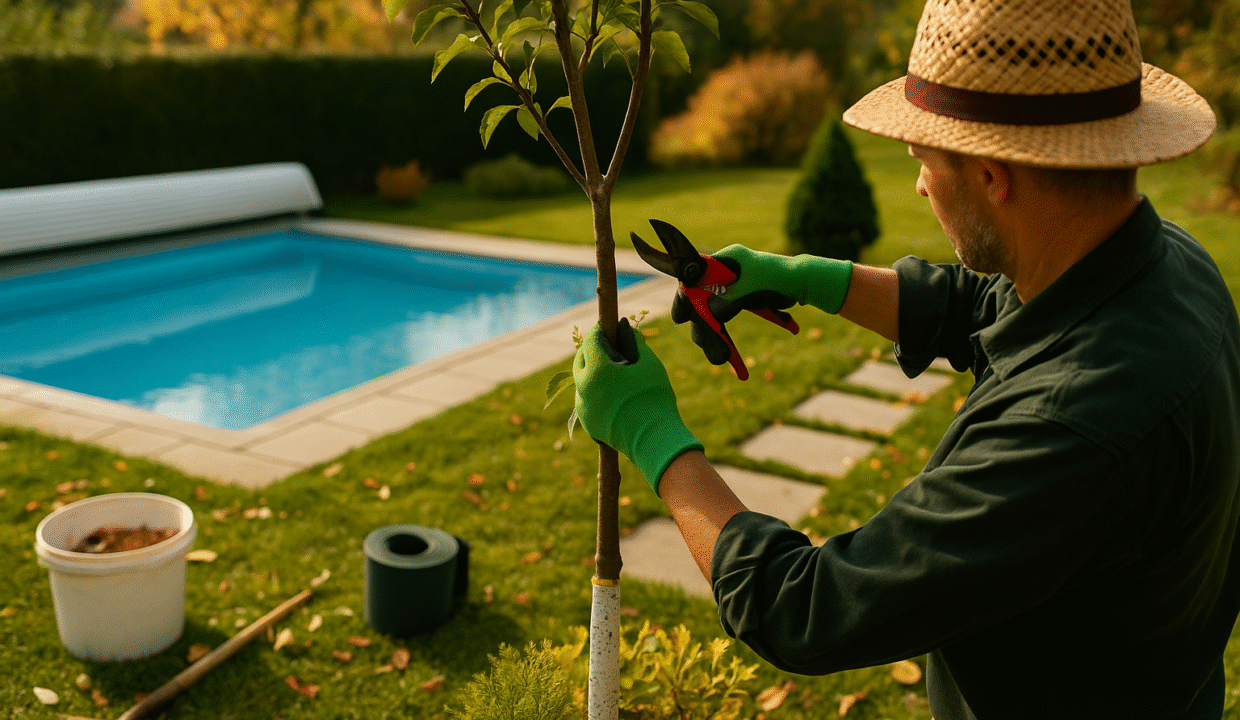
Goal:
Avoid frost damage, maintain water quality, get plants & technology through the winter - without full-throttle gardening.
1) Classic pool (chlorine/salt)
- Lower the water level: to below the skimmer/nozzles. Do not empty completely (risk of floating/structural damage).
- Water from pipes/technology: Blow out/empty pipes; empty pump/filter, insert frost plugs; use pressure gauge/winter plugs or winter plugs.
- Treat water: adjust pH ~7.2-7.4, shock once, dose winteriser/algae stop.
- Cover: tight winter tarpaulin or safety cover; remove leaves regularly.
- Accessories: Remove ladder, clean metal parts, insert rubber buffer/floating body (ice pressure pad) to reduce pressure on the pool.
2) Natural/swimming pond
- Do not empty.
- Plant care: Cut back reeds/shrubs only moderately (leave 10-20 cm of stems → gas exchange, habitat).
- Manage foliage: regularly collect leaves, if necessary stretch a leaf net → reduce nutrient input.
- Technology: Depending on the system, relocate the circulation pump to a lower, frost-free area or remove it and store it in a frost-free location.
- Ice phase: An ice freezer keeps a small open area so that gases can escape.
3) Woody plants & orchard
- Pruning: Heavy pruning of fruit rather later in winter/late winter (more gentle on plants). In autumn, only dead wood, rubbing points, water shoots selectively.
- Lime paint (white coat) on trunk & thick branches: prevents frost plates/sunburn (winter sun + night frost). Apply on dry days in late autumn/early winter; use special tree paint or milk of lime.
- Apply glue rings (creeping glue, "aphid band") from Sept/Oct: stops female frost moths on their way into the crown → fewer caterpillars/leaf feeding in spring. Check/replace regularly.
- Perennials & beds: Leave some of the faded plants standing (insects, winter structure), mound/mulch sensitive perennials.
Conclusion: Better less, but targeted. This protects the substance, saves frustration in spring - and gives the garden enough winter rest for beneficial organisms.


